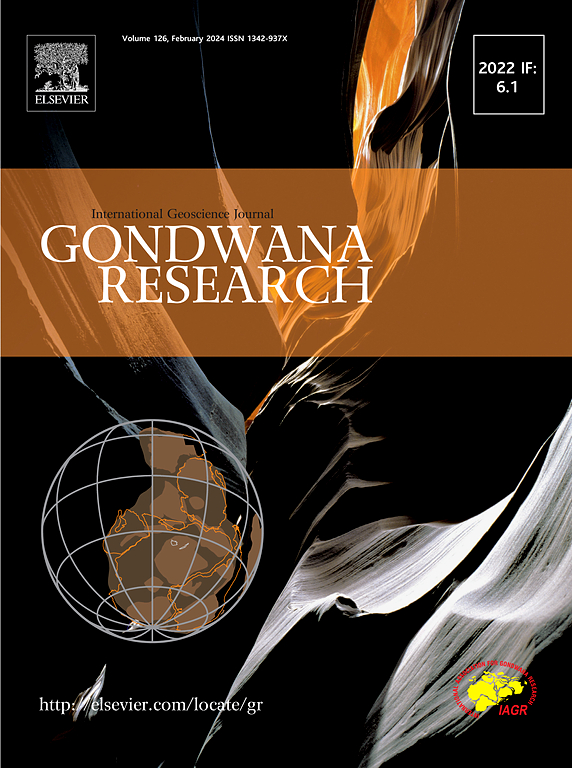Nature and tectonic setting of the Paleotethyan giant igneous belt in Southeast Asia
IF 7.2
1区 地球科学
Q1 GEOSCIENCES, MULTIDISCIPLINARY
引用次数: 0
Abstract
Southeast Asia provides a well-preserved magmatism record of the Late Paleozoic to Early Mesozoic history of subduction and consumption of the Paleotethyan Ocean and the resultant assembly of continental fragments. Abundant Late Paleozoic to Early Mesozoic igneous rocks, associated with the consumption of the Eastern Paleotethyan Ocean have formed the Lincang-Sukhothai-Chanthaburi-East Malaya giant igneous belt. However, the style of subduction, the timing and character of initial collision, and related magmatic dynamic processes remain a source of contention. In this paper, we present a synthesis of geochronological, geochemical, and Sr–Nd–Pb–Hf–O isotopic studies based on the latest Carboniferous–Triassic igneous rock associations from the Eastern and Central Granite Provinces, and from the Permian–Triassic volcanic zones of this giant igneous belt and surrounding areas. Our comprehensive study, along with regional distributions and geological observations suggests that the Paleotethyan subduction began at the Late Carboniferous (ca. 315 Ma) and continued until the Middle Triassic (ca. 240 Ma). Inferred slab roll-back initially began after ca. 270 Ma and subsequently formed granitoids along the Eastern Province and rift-related igneous rocks. The tectonic transition from subduction to initial continental collision between the Sibumasu and Indochina-East Malaya began at ca. 237 Ma, resulting in partial melting of middle-lower crust to form the high-silica volcanic rocks and syn-collisional granitic intrusions. Subsequent slab detachment triggered the asthenospheric upwelling to form the linearly distributed mafic-felsic igneous rocks along the Lancangjiang-Chiang Khong-Lampang-Tak volcanic zone and Eastern Province at ca. 230 Ma. Finally, gravitational collapse of the orogenic belt occurred during the Late Triassic (230–200 Ma) with the main phase at ca. 220 Ma, forming the Central Province. The Eastern Paleotethyan orogen terminated at ca. 200 Ma.

求助全文
约1分钟内获得全文
求助全文
来源期刊

Gondwana Research
地学-地球科学综合
CiteScore
12.90
自引率
6.60%
发文量
298
审稿时长
65 days
期刊介绍:
Gondwana Research (GR) is an International Journal aimed to promote high quality research publications on all topics related to solid Earth, particularly with reference to the origin and evolution of continents, continental assemblies and their resources. GR is an "all earth science" journal with no restrictions on geological time, terrane or theme and covers a wide spectrum of topics in geosciences such as geology, geomorphology, palaeontology, structure, petrology, geochemistry, stable isotopes, geochronology, economic geology, exploration geology, engineering geology, geophysics, and environmental geology among other themes, and provides an appropriate forum to integrate studies from different disciplines and different terrains. In addition to regular articles and thematic issues, the journal invites high profile state-of-the-art reviews on thrust area topics for its column, ''GR FOCUS''. Focus articles include short biographies and photographs of the authors. Short articles (within ten printed pages) for rapid publication reporting important discoveries or innovative models of global interest will be considered under the category ''GR LETTERS''.
 求助内容:
求助内容: 应助结果提醒方式:
应助结果提醒方式:


